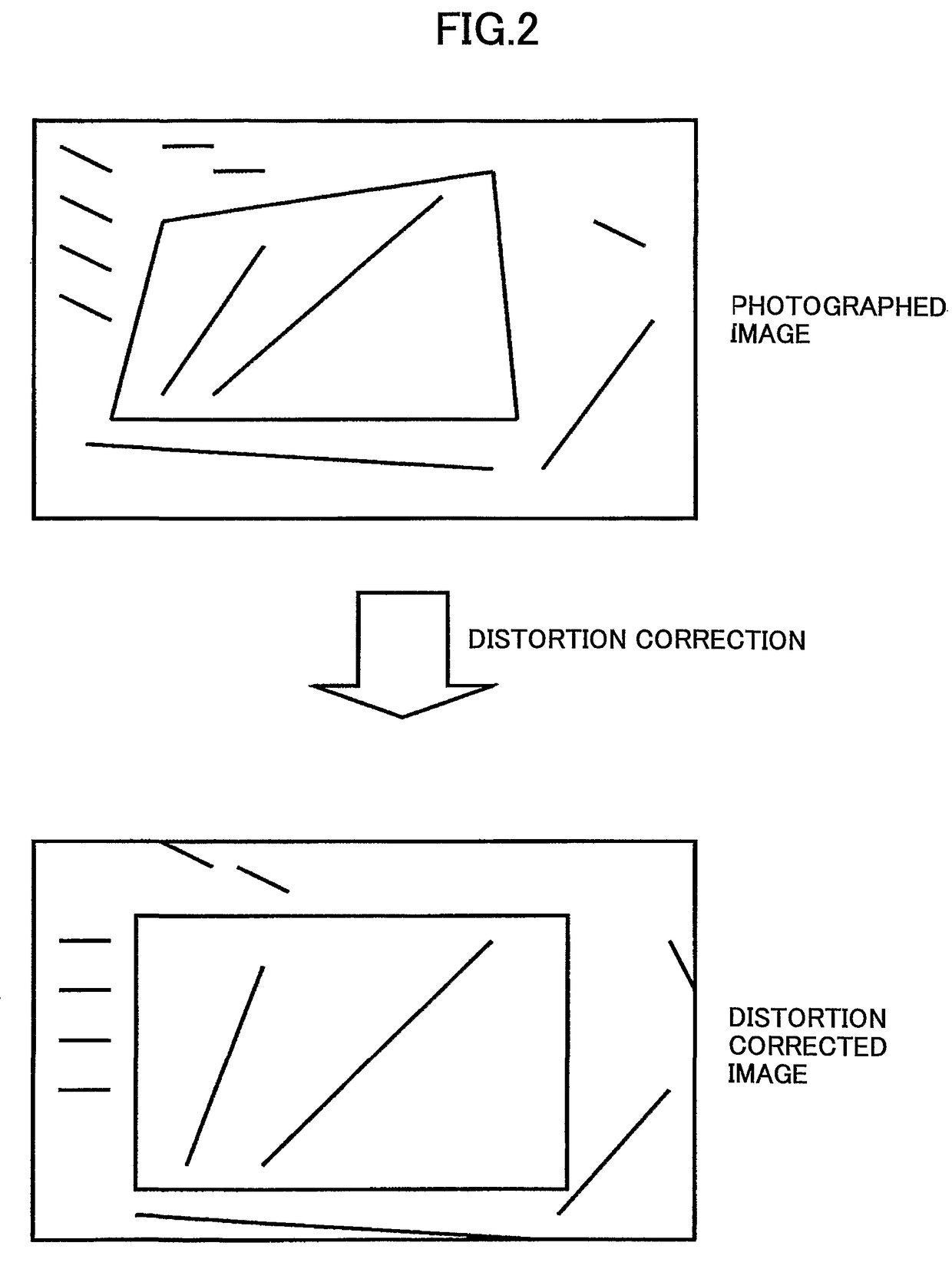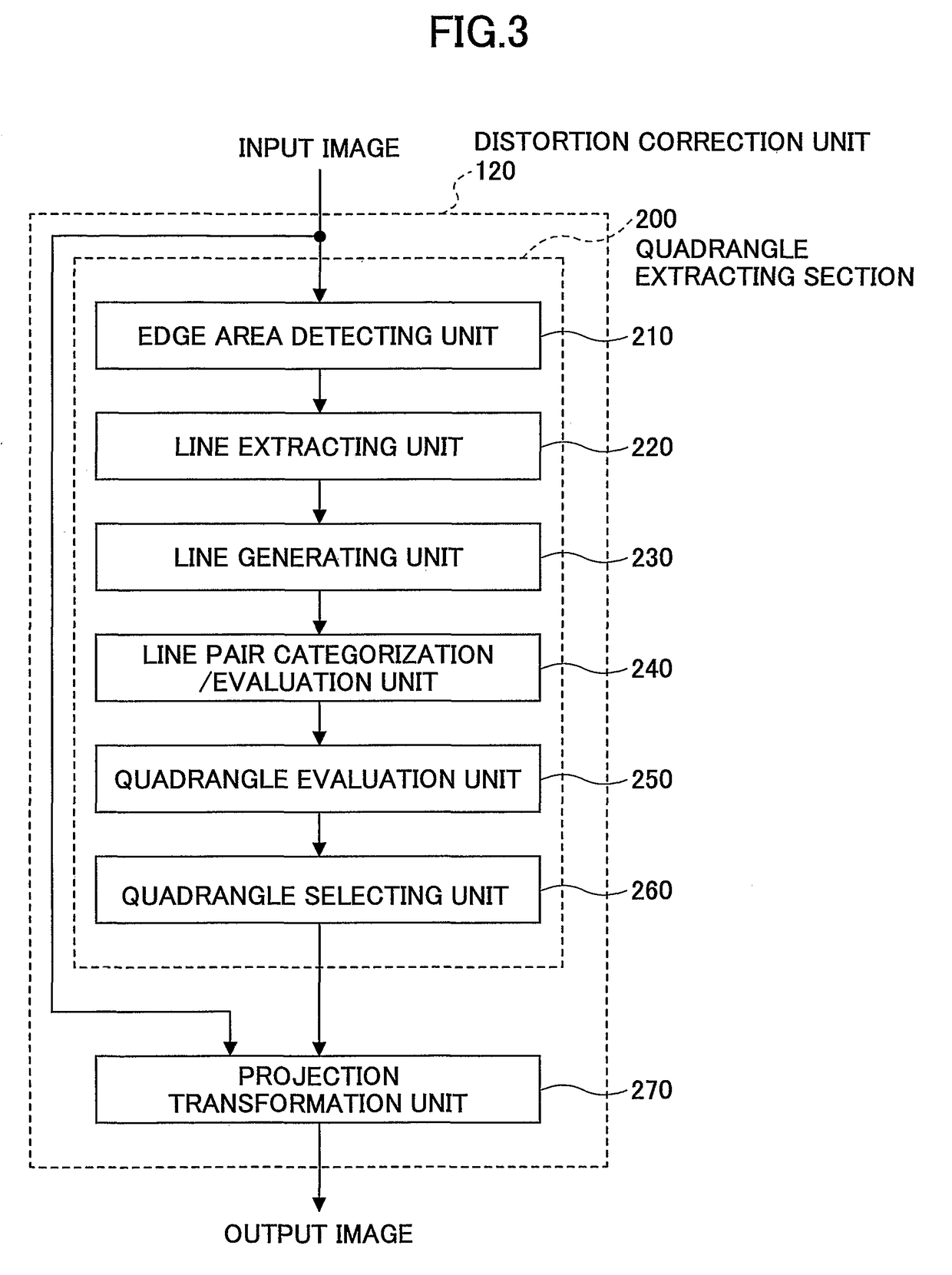Image processing method and apparatus, digital camera, and recording medium recording image processing program
a technology of image processing and image processing program, which is applied in the field of preprocessing technology for correcting distortions of photographed images, can solve the problems of difficult reading, object cannot be recognized, and pictures of train schedules and posters may be distorted depending on the situation, so as to achieve easy selection of optimal rectangles, high precision, and high speed
- Summary
- Abstract
- Description
- Claims
- Application Information
AI Technical Summary
Benefits of technology
Problems solved by technology
Method used
Image
Examples
first embodiment
[0082]FIG. 1 is a block diagram of a digital camera including an image processing function according to the present invention. As shown in FIG. 1, a photographing section 11 includes a lens 111; an aperture 112, a shutter 113, a photoelectric conversion element 114, and a preprocessing unit 115. By operating the shutter 113, the photoelectric conversion element 114 receives an object light through the lens 111 and the aperture 112, and the object light is converted into analog image signals. An example of the photoelectric conversion element 114 is a CCD (charge-coupled device). The preprocessing unit 115 includes a preamplifier, an analog signal processing unit such as an AGC (automatic gain control), and an A / D conversion unit. The preprocessing unit 115 performs preprocesses such as amplifying / clamping on the analog image signals received from the photoelectric conversion element 114, and then converts the analog image signals into digital image signals.
[0083]The digital signals ...
second embodiment
[0162]More detailed descriptions are given below. FIG. 18 is a block diagram of a digital camera including an image processing function according to the present invention. As shown in FIG. 18, a photographing section 11 includes a lens 111, an aperture 112, a shutter 113, a photoelectric conversion element 114, and a preprocessing unit 115. By operating the shutter 113, the photoelectric conversion element 114 receives an object light through the lens 111 and the aperture 112, and the object light is converted into analog image signals. An example of the photoelectric conversion element 114 is a CCD charge-coupled device). The preprocessing unit 115 includes a preamplifier, an analog signal processing unit such as an AGC (automatic gain control), and an A / D conversion unit. The preprocessing unit 115 performs preprocesses such as amplifying / clamping on the analog image signals received from the photoelectric conversion element 114, and then converts the analog image signals into dig...
third embodiment
[0179]FIG. 22 is a flowchart of a superposed image creation method (part 1) according to a The process shown in FIG. 22 is performed for all pixels of the candidate quadrangles and the input image (RGB 256 shades).
[0180]Coordinates and a pixel value (Vr, Vg, Vb) of a pixel of an input image are input (step 301). Vr represents a pixel value for red (R), Vg represents a pixel value for green (G), and Vb represents a pixel value for blue (B). One candidate quadrangle is input (step 302). In this example, it is assumed that the first candidate quadrangle 2080 is input. Each pixel of the input image is considered as a target pixel, and the following process is performed on a target pixel.
[0181]The superposed image creating unit 202 determines whether a target pixel is on the perimeter of the quadrangle (step 303). A pixel on the perimeter of a quadrangle is defined as a pixel on a side of the quadrangle formed by four vertexes extracted by the quadrangle extracting unit 201 being connec...
PUM
 Login to View More
Login to View More Abstract
Description
Claims
Application Information
 Login to View More
Login to View More - R&D
- Intellectual Property
- Life Sciences
- Materials
- Tech Scout
- Unparalleled Data Quality
- Higher Quality Content
- 60% Fewer Hallucinations
Browse by: Latest US Patents, China's latest patents, Technical Efficacy Thesaurus, Application Domain, Technology Topic, Popular Technical Reports.
© 2025 PatSnap. All rights reserved.Legal|Privacy policy|Modern Slavery Act Transparency Statement|Sitemap|About US| Contact US: help@patsnap.com



